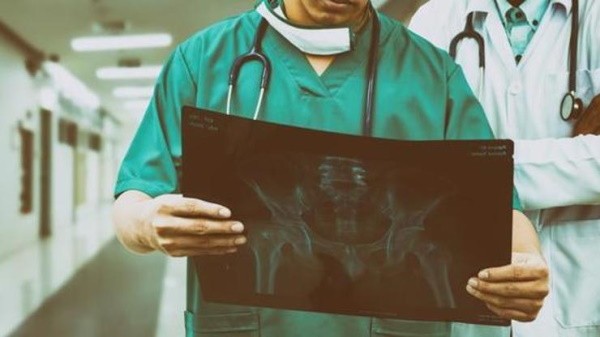According to the Centers for Disease Control and Prevention, motor vehicle accidents cause about 38,000 deaths yearly. Those who do not die suffer injuries ranging from minor to severe to catastrophic. One of such injuries which we see commonly at Ted A. Greve and Associates are fractures.
Fractures are by far one of the most common injuries sustained in automobile accidents. The sheer force of two vehicles colliding with each other or with a stationary object sends tremendous pressure to the body. When absorbed by the body, this force is powerful enough to shatter bones, especially if the accident is a high-impact collision.
If the person or persons in the car were not wearing their seatbelts, the collision could eject them from the vehicle. When the body lands on the roadway, bone fractures are bound to happen. This article looks at the common fractures Augusta residents sustain in automobile accidents.
If you sustain broken bones from a car accident, you can demand compensation from the at-fault party. Contact our Augusta auto accident lawyers for expert legal advice and representation.
What Are the Types of Fractures Suffered in Auto Accidents?
Bone breaks take many different forms and have different consequences if left untreated. The broad categories are open/compound fractures and closed/simple/stable fractures. Open fractures are usually quite severe because the bone pierces the skin, rupturing it.
The rupture exposes the deep tissues in the skin and even the bone itself. If left untreated, the fracture may become complicated if the wound gets infected. Conversely, in simple fractures, the broken bone doesn’t pierce the skin but remains within the body. Therefore, it is easier to treat and mostly requires using a cast in the affected area.
Below we list out different types of fractures that fall within these two categories:
- Greenstick Fractures: The bone bends but doesn’t break entirely through. It happens due to a force perpendicular to the bone axis.
- Comminuted Fractures: The bone breaks completely into several pieces.
- Traverse Fractures: The break to the bone is perpendicular to the shaft. It happens when the force applies at a right angle to the bone.
- Oblique Fractures: Here, the break is diagonal or at an angle to the bone shaft; it is not perpendicular. It happens when the force applied is at an oblique angle to the bone.
- Avulsion Fractures: A small piece of bone breaks away from a larger bone. They happen due to the sudden traumatic pulling of the body in one direction after the accident.
- Stress Fractures: These are tiny hairline breaks that happen in the foot and leg bones.
- Buckled Fractures: They happen when bones smash into pieces after an impact causing displacement.
What Fracture Would You Sustain in a Car Accident?
Below we look at the bones that mostly break in car accidents.
- Femur Fracture: Despite being the longest and strongest bone in the human body, the femur (thigh bone) is susceptible to breaks in high-impact crashes.
- Tibia/Fibula Fracture: The tibia and fibula are the bones in the leg. The tibia is a larger bone on the inside, and the fibula is a smaller bone on the outside. The tibia is much thicker than the fibula. It is the prominent weight-bearing bone of the two. The fibula supports the tibia and helps stabilize the ankle and lower leg muscles. Where the car crumples in an accident, the tibia and fibula will likely break.
- Rib Break: Fractures to one or more ribs are quite common in automobile accidents. Since the ribs are pretty delicate, these fractures happen while you’re wearing a seatbelt.
- Wrist Fracture: The wrist comprises multiple small bone structures and is quite susceptible to car accidents.
- Arm Fracture: An arm fracture happens when a victim lifts their hand to brace themselves for the collision impact.
- Facial and Skull Fracture: These breaks happen when a person hits their head on a structure inside or outside the vehicle. It is most common where car occupants do not wear seatbelts, and potentially severe.
- Clavicle Break: The clavicle or collarbone is one of the most fragile bones in the body, making it prone to break in an accident.
- Back and Vertebrae Fracture: The spine has multiple bone structures, and any of them can get fractured in an accident. Effects of back or vertebrae breaks range from nerve damage to general paralysis.
Contact Expert Augusta Car Accident Lawyers at Ted A. Greve and Associates
Broken bones are quite painful and limit a person’s ability to work after an accident. You might also be hospitalized for a while resulting in extensive medical bills. Our auto accident lawyers in Augusta can help you get the maximum compensation for your injuries and other losses. Contact us today to schedule a free virtual case review.


